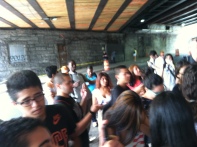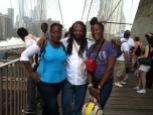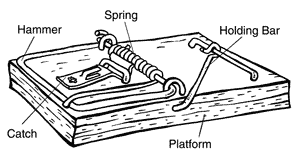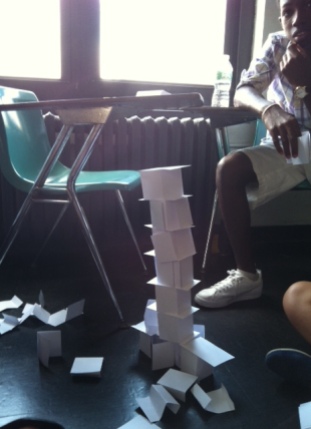The Brooklyn Bridge is without a doubt a modern day marvel. Designed by the Roebling Family it has stood the test of time and entered the imagination of the American Public. As usual for a Summer in New York we were threatened by the weather. But with our spirits high and our umbrellas higher, we braved the elements to have a first hand look at this engineering feat.
Starting out from the Brooklyn side we had a similar view to the Roebling household from where they supervised the bridge’s construction. As we crossed the bridge we learned about all the features of the bridge. While it is a suspension bridge by design it also incorporates a truss design for added strength. Roebling added cables to further strengthen the bridge and while it was determined that they were not necessary, they were kept because it made the bridge look even more majestic.
We also paid attention to the surrounding features on both the Manhattan and Brooklyn sides of the bridge. The class also took rubbings of some of the plaques on the bridge that depict some of the engineering, construction, and general interest facts of the bridge. I was impressed by the groups ability to withstand a minor hurricane (small rain shower) as it passed by. And especially Carlos for keeping some random tourist nice and dry!
A few facts about the bridge.
The Brooklyn Bridge was initially designed by German immigrant John Augustus Roebling, who had previously designed and constructed shorter suspension bridges, such as Roebling’s Delaware Aqueduct in Lackawaxen, Pennsylvania, Waco Suspension Bridge in Waco, Texas, and the John A. Roebling Suspension Bridge in Cincinnati, Ohio.
While conducting surveys for the bridge project, Roebling sustained a crush injury to his foot when a ferry pinned it against a piling. After amputation of his crushed toes he developed a tetanus infection which left him incapacitated and soon resulted in his death, not long after he had placed his 32-year-old son Washington Roebling in charge of the project.
Washington Roebling also suffered a paralyzing injury as a result of decompression sickness shortly after the beginning of construction on January 3, 1870. This condition, first called “caisson disease” by the project physician Andrew Smith, afflicted many of the workers working within the caissons. After Roebling’s debilitating condition left him unable to physically supervise the construction firsthand, his wife Emily Warren Roebling stepped in and provided the critical written link between her husband and the engineers on site. Under her husband’s guidance, Emily studied higher mathematics, the calculations of catenary curves, the strengths of materials, bridge specifications, and the intricacies of cable construction. She spent the next 11 years assisting Washington Roebling, helping to supervise the bridge’s construction.
When iron probes underneath the caisson found the bedrock to be even deeper than expected, Roebling halted construction due to the increased risk of decompression sickness. He later deemed the aggregate overlying the bedrock 30 feet (9 m) below it to be firm enough to support the tower base, and construction continued.
The Brooklyn Bridge was opened for use on May 24, 1883. The opening ceremony was attended by several thousand people and many ships were present in the East Bay for the occasion. President Chester A. Arthur and New York Mayor Franklin Edson crossed the bridge to celebratory cannon fire and were greeted by Brooklyn Mayor Seth Low when they reached the Brooklyn-side tower. Arthur shook hands with Washington Roebling at the latter’s home, after the ceremony. Roebling was unable to attend the ceremony (and in fact rarely visited the site again), but held a celebratory banquet at his house on the day of the bridge opening.
Roebling Senior not only designed the bridge but also drew all the plans for its constructions so that any worker could understand their task and complete it to perfection.





































